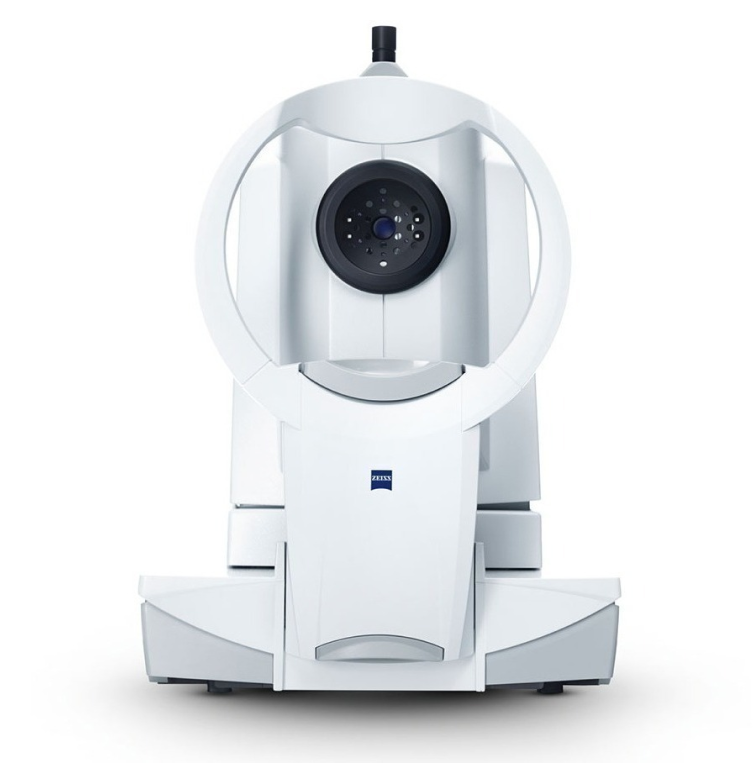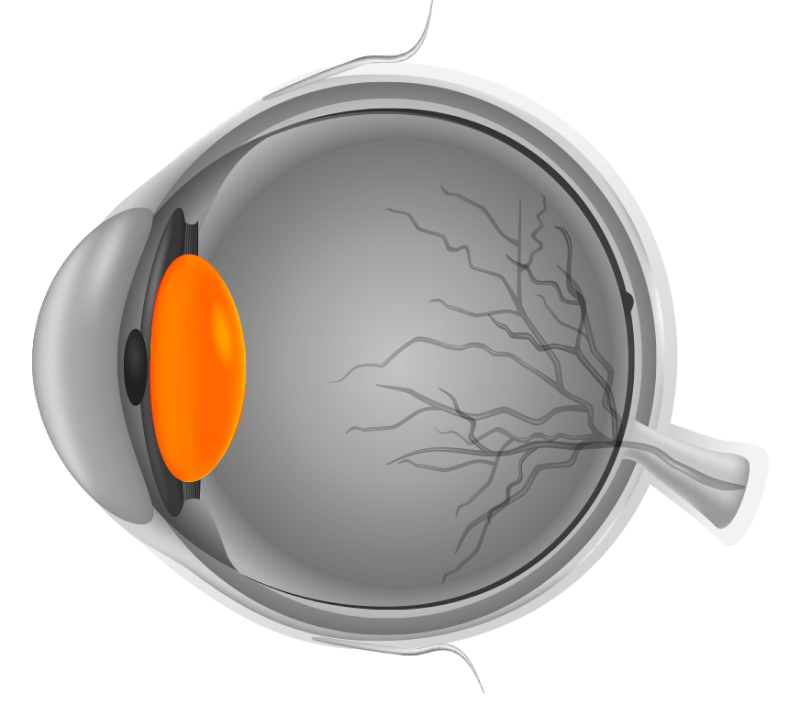What to expect from your cataract surgery?
Information on Cataract Surgery
Cataract surgery is a procedure that helps in removing a cloudy lens that blurs the vision of a person as they age. Lens lets the light rays bend into the eye that helps you see and for this reason, a lens must always be clear.
A lens should always be clear because its purpose is to bend the light rays, which inturn helps you see.
With Cataract, however, the lens becomes cloudy, making your vision similar to that of a windshield that’s foggy or dusty. Everything appears blurry, hazy, or less colourful. A surgery is the only way to remove it. However, it’s only recommended when the cataract is affecting your day to day life. In a cataract surgery, the natural lens is removed and replaced with a clear artificial lens, called an intraocular lens (IOL). For more information, you can speak to our Ophthalmologists.
Before Surgery
he first thing that your Ophthalmologist will do is measure your eye to set the proper focusing power for your IOL. Then, you would need to briefly explain any medical history, including any medicines that you are currently taking – even being asked to not take certain medications before your surgery.
On the other hand, you might be prescribed eye drops before surgery to prevent infection and reduce swelling from the surgery.
On the Day of Surgery
You will be given anesthesia in the form of eye drops or injections to numb your eye. Although you will be awake during the surgery and may see light and movement, you will not be able to see what the doctor is doing. Your surgeon will enter the eye through tiny incisions near the edge of your cornea (the clear covering on the front of your eye), using these incisions to reach your lens. Using very small instruments, he or she will break up the cataract and remove it. Then your new intraocular lens is inserted into its place.
These incisions are usually self-sealing which means that the surgeon won’t need to stitch them closed. Since this healing will take some time, a shield will be placed to protect your eye during this period. You will rest in a recovery area for about 15 to 30 minutes after which you will be discharged.
Cataract Surgery Recovery
Eye drops will be recommended to you by your doctor. Make sure you follow their instructions and take these drops on time. You would also need to be careful not to let soap or water enter your eye directly or rubbing or pressing it.
Your ophthalmologist may ask you to wear eyeglasses or a shield to protect your eye. Your ophthalmologist will talk with you about how active you can be soon after surgery. They will also let you know when is the best time to go back to your regular activities like exercise, driving, or similar activities.
However, you must remember that it’s not unusual to find your vision becoming cloudy and blurry again after the surgery. It is common to see the blurry vision returning in weeks, months, or years, depending on each case. In such cases, posterior capsulotomy – a laser procedure, is recommended to restore clear vision.
WHAT ARE THE RISKS OF CATARACT SURGERY?
All surgeries carry some risks or complications and a cataract surgery is no different. Some of those risks are:
INTRAOCULAR IMPLANTS/LENS REPLACEMENT AFTER CATARACT SURGERY
The tiny, artificial lens that’s implanted as a replacement for an affected lens is known as an intraocular lens (or IOL). The lens bends light rays that enter the eye, helping you to see. Your lens should be clear. But if you have a cataract, your lens has become cloudy. Things look blurry, hazy, or less colourful with a cataract. Cataract surgery removes this cloudy lens and replaces it with a clear IOL to improve your vision.
IOLs come in different focusing powers, just like prescription eyeglasses or contact lenses. The one that’s the right fit for you will depend on the measurements that the ophthalmologist will take before the surgery.
It’s also important to talk to your surgeon about your vision needs and expectations to be absolutely clear about what you’ll get out of the surgery.
Most IOLs are made of PMMA or Acrylic. Some IOLs are coated with a special material to help protect your eyes from the sun’s harmful ultraviolet (UV) rays.
Monofocal IOLs
These are the most commonly used lenses in cataract surgeries. It has one focusing distance and is set to focus on either a close, a medium range, or a distance vision. Most people prefer to have them set for a clear distant vision, wearing glasses for close vision.
For people with astigmatism – a refractive error due to an uneven curve in your cornea or lens – there is an IOL called a toric lens. The toric lens is designed to correct that refractive error.
EDOF IOLs
Designed to create an elongated focus, these IOLs enhance intermediate and close visual performance of the eye.
Multifocal IOLs
Standard IOLs see at a certain distance. They only have one focal point. More often than not, the IOLs are targeted to offer distance vision because of indispensable activities like walking and driving needing a distant vision. Despite this, sometimes it’s important to have a clear near vision as well, so that patients might need bifocal and trifocal glasses for nearby objects. For these cases, multifocal lenses are used, with different focusing powers within the same lens. They reduce any dependence on glasses and provide both vision distances simultaneously and are designed in a way that helps the brain learn to select the right focus on its own.
Trifocal IOLs
Multifocal lenses have rings that switch between two focal points, making your vision sharper up close depending on what you’re looking at. Trifocal lenses, on the other hand, have three separate parts, each with its own focal point. This allows you to see sharply up close and at intermediate distances, as well as clearly when looking at things at a distance. With a trifocal lens, you may not need reading glasses and can have clear vision no matter what you’re looking at. If you want visual freedom after cataract surgery or less dependence on glasses, consider getting a trifocal lens.
Equipment and Technology

At Shantilal Shanghvi Eye Institute, our state-of-the-art equipment offers the latest technology to provide you with a comprehensive solution for your cataract.
Our suite features the Zeiss Artevo 800, a game-changing microscope with a stereoscopic 3D image on a 4K monitor. It offers the most advanced ophthalmic visualization technology in the world. The Zeiss Artevo 800 provides an extraordinary surgical view with a 25% higher resolution compared to other systems, making it a step into the future and the latest technology in Zeiss microscopes.
We also offer the Zeiss Callisto eye, a computer-assisted cataract surgery device that offers markerless alignment. This system eliminates the need for manual marking steps, resulting in an efficient and more precise personalized toric IOL alignment with reduced residual astigmatism. The Zeiss Callisto eye is fully integrated into our Zeiss operation suite.
Our Zeiss IOL Master 700 builds on over 20 years of experience in measuring intraocular lens powers, making it the longest-serving device in its category. It boasts outstanding repeatability, which is essential for good refractive outcomes. Its unique swept-source biometry with 2,000 scans per second provides excellent refractive outcomes.
The Alcon Centurion Phacoemulsification system has set a new standard of performance in cataract surgery, which we use in our procedures. This advanced system offers improved safety, consistency, and control to ensure the best outcomes for every cataract patient.
Our modular operation theatre is designed to achieve safety, precision, and efficiency for the entire operating team. It streamlines workflow and delivers better patient outcomes by eliminating wasted time and resources. Our operation theatre drives consistency and smooth flow during operations, reducing the risk while carrying out surgical procedures. It is designed as per NABH norms and meets the best standards of care.
Contact Us
A Unit of Shantilal Shanghvi Foundation
Copyright © JGDHealth. All Rights Reserved.


